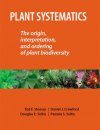By: Tod F Stuessy(Author), Daniel J Crawford(Author), Douglas E Soltis(Author), Pamela S Soltis(Author)
425 pages, colour & b/w photos and illustrations
![Plant Systematics Plant Systematics]()
Click to have a closer look
About this book
Contents
Customer reviews
Related titles
About this book
The greatest treasure of our Earth is its biodiversity. The life forms that share our world are responsible for the environment that we know and appreciate, which permits Earth to be so inviting in comparison with the other barren and desolate planets in our solar system. Systematics is the science that deals with understanding these millions of organisms, and plant systematics focuses on the green world that covers much of our continents. To understand plant biodiversity involves chronicling evolutionary origins (processes), interpreting evolutionary patterns (phylogeny), and ordering the diversity into classifications (taxonomy). Plant Systematics offers insight to these three major aspects of the plant world. Five chapters provide an overview of the many evolutionary mechanisms that have been operative in the production of plant biodiversity. Six chapters contain information on the concepts and methods of modern phylogenetic reconstruction. Five chapters deal with issues of classification, including historical perspectives and comparisons among phenetic, cladistic, and evolutionary (phyletic) approaches. Three chapters also present types of data, from the morphological to the molecular, which are routinely used in plant systematics research programs. Plant Systematics, designed for use at the upper undergraduate and graduate levels, contains extensive literature citations that open avenues to topics for further study or analysis.
Contents
- Preface
- Acknowledgments
PART ONE. Biodiversity and Plant Systematics
- The importance of biodiversity
- The relevance of systematics
PART TWO. Systematic Data
- The structural world: morphology, anatomy, embryology, and palynology
- The genetic revolution: cytogenetics, molecular biology, and population genetics
- The environment: phytochemistry, reproductive biology, and ecology
PART THREE. Evolutionary Origins of Plant Biodiversity
- Genetic diversity in plant populations
- The distribution of genetic diversity within species
- Primary or divergent speciation
- Hybridization and homoploid hybrid speciation
- Polyploidy
PART FOUR. Phylogenetic Interpretations of Plant Biodiversity
- Characters used in phylogeny reconstruction
- Methods of phylogeny reconstruction
- Support measures
- Congruence and consensus
- Character evolution
- Molecular clocks and molecular evolution
PART FIVE. Ordering of Plant Biodiversity
- The importance and universality of classification
- Approaches to classification
- Species
- Subspecies, variety, and form
- Genus, family, and higher categories
CONCLUSION. The Relationship and Importance of Plant Systematics to Biodiversity Studies
- Literature Cited, Index to Taxa
- Index to Subjects
Customer Reviews
By: Tod F Stuessy(Author), Daniel J Crawford(Author), Douglas E Soltis(Author), Pamela S Soltis(Author)
425 pages, colour & b/w photos and illustrations




































![Iconographia Diatomologica, Volume 1: Die Diatomeen (Bacillariophyceae) in Ehrenbergs Material von Cayenne, Guyana Gallica (1843) [The Diatoms (Bacillariophyceae) in Ehrenberg's Material by Cayenne, Guyana Gallica (1843)]](http://mediacdn.nhbs.com/jackets/jackets_resizer_medium/37/37981.jpg?height=150&width=106)






